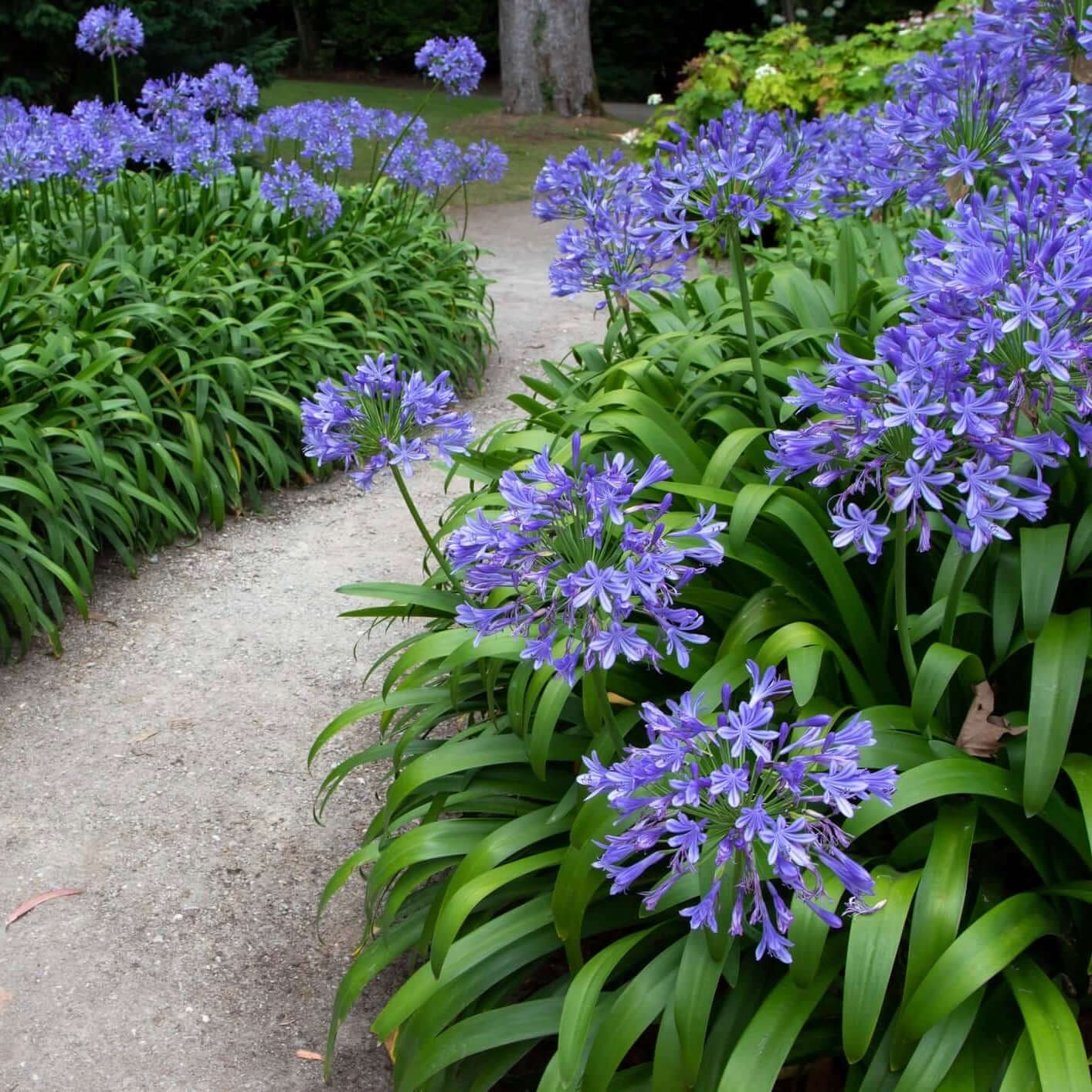Agapanthus Varieties: Picking the Best for Your Landscape
Agapanthus Varieties: Picking the Best for Your Landscape
Blog Article
Understanding the Art of Agapanthus Treatment: Important Steps for Healthy And Balanced Development and Dynamic Blossoms
In the realm of gardening, the growing of agapanthus stands as a satisfying venture for those who seek to nurture these classy blooming plants. From selecting the right variety to grasping pruning techniques, the trip towards growing prospering agapanthus plants is multifaceted and holds the key to opening the full possibility of these botanical gems.

Picking the Right Agapanthus Variety

When selecting the best Agapanthus range for your garden, think about aspects such as environment viability, blossom shade, and growth routine. Agapanthus, generally called Lily of the Nile or African lily, comes in a range of shades ranging from shades of blue and purple to white. Select a flower color that enhances your existing garden scheme to produce a harmonious landscape. In addition, take into consideration the environment in your area to make certain the Agapanthus variety you pick can grow in your details problems. Some ranges are much more tolerant of cold temperatures, while others favor warmer environments. Recognizing the development routine of different Agapanthus varieties is crucial for correct positioning within your garden. Some ranges have a clumping development behavior, suitable for containers or borders, while others have a more dispersing nature, ideal for ground cover or mass growings. By thoroughly evaluating these factors, you can select the ideal Agapanthus variety to enhance the beauty of your yard.
Perfect Planting Conditions
Thinking about the ideal ecological demands is necessary for effective Agapanthus cultivation. Agapanthus plants are sensitive to cold temperature levels and ought to be shielded from frost during winter season months.
To make certain healthy growth and vibrant blossoms, plant Agapanthus light bulbs at a depth of regarding 2-4 inches and area them 8-12 inches apart. Mulching around the base of the plants aids maintain moisture and subdues weed development.
Watering and Feeding Tips
Keeping proper dampness levels and providing necessary nutrients are key aspects in the treatment program for Agapanthus plants. When it comes to sprinkling Agapanthus, it is essential to strike a balance. These plants like continually moist dirt yet are vulnerable to root rot if overwatered.
Feeding Agapanthus is crucial for promoting healthy development and respected blossoms. Use a balanced plant food, such as a 10-10-10 formula, in the early spring as new development arises. Repeat this application every 6-8 weeks throughout the expanding season. Prevent excessive fertilizing, as it can bring about lush vegetation at the cost of flowers. Constantly follow the manufacturer's instructions for proper dilution and application techniques. By adhering to these watering and feeding ideas, you can guarantee your Agapanthus plants thrive and create vivid, resilient flowers.
Pruning Strategies for Agapanthus
Trimming Agapanthus plants at the proper times and with appropriate methods is crucial for maintaining their wellness and advertising optimal growth and blooming. The suitable time to prune Agapanthus is why not look here in late winter or early springtime prior to new growth arises. Begin by getting rid of any kind of dead or yellowing fallen leaves near the base of the plant. Cut them as short as feasible without harming the arising shoots.
For flowered stems, wait till the flowers have perished and after the original source that cut them back to the base. This not only tidies up the plant's appearance however also encourages the development of new blossom buds. Deadheading invested blossoms can also reroute the plant's energy right into producing more flowers instead than setting seeds. However, if you want to accumulate seeds for proliferation, leave some blossoms to mature and dry on the plant.
Remember to make use of tidy, sharp tools to make exact cuts and lower the risk of introducing conditions. Agapanthus. Normal pruning will assist maintain your Agapanthus looking healthy and neat while making certain a bountiful display screen of lovely blossoms
Taking Care Of Typical Parasites and Diseases
After making certain appropriate trimming strategies for Agapanthus, it is crucial to attend to usual insects and conditions that can affect the wellness and vigor of these plants. One common bug that impacts Agapanthus is the Agapanthus gall midge.
Another common concern is fungal fallen leave area, which provides as dark lesions on the fallen leaves. To stop fungal conditions, guarantee great air blood circulation around the plants, stay clear of overhanging watering, and remove any contaminated leaves without delay. In addition, Agapanthus plants can struggle with origin rot if they are grown in inadequately draining dirt. To avoid this, plant Agapanthus in well-draining soil and prevent overwatering. By being vigilant and taking punctual action versus conditions and pests, you can aid your Agapanthus plants flourish and create lively blossoms.

Verdict
In verdict, mastering the art of agapanthus care includes selecting the appropriate range, providing ideal planting conditions, proper watering and fertilizing, proper pruning methods, and resolving typical pests and conditions. By following these necessary steps, you can guarantee healthy and balanced growth and dynamic blooms for your agapanthus plants. Keep in mind to frequently keep track of and keep your plants to advertise their general well-being and longevity.
To make certain healthy development and vivid flowers, plant Agapanthus bulbs at a her comment is here deepness of concerning 2-4 inches and space them 8-12 inches apart. By complying with these watering and feeding pointers, you can guarantee your Agapanthus plants prosper and produce dynamic, resilient blooms.
One usual pest that impacts Agapanthus is the Agapanthus gall midget. In addition, Agapanthus plants can experience from origin rot if they are grown in badly draining soil. By following these necessary actions, you can ensure healthy and balanced development and lively blooms for your agapanthus plants.
Report this page